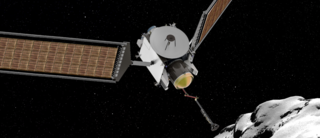उच्च बृहस्पति के बादल ऊपर

नासा के जूनो अंतरिक्ष यान बृहस्पति से एक छोटे से अधिक पृथ्वी के व्यास थे, जब इसने मन-झुकने को ग्रहण कर लिया, ग्रह के अचरज वायुमंडल का रंग बढ़ाया दृश्य। बृहस्पति पूरी तरह से छवि को भरता है, केवल टर्मिनेटर का एक संकेत (जहां दिन के उजाले को रात के उजाले में) ऊपरी दाएं कोने में, और कोई दृश्य अंग (ग्रह का घुमावदार किनारा) नहीं है। जुनो ने ज्यूपिटर के उत्तरी गोलार्ध में रंगीन, अशांत बादलों की छवि को 16 दिसंबर, 2017 को 9:43 पूर्वाह्न से पीएसटी (12:43 पूर्वाह्न ईएसटी) में 8,292 मील (13,345 किलोमीटर) से बृहस्पति के बादलों के ऊपर से ऊपर, अक्षांश के ऊपर ले लिया। 48.9 डिग्री इस चित्र में स्थानिक स्तर 5.8 मील / पिक्सेल (9.3 किलोमीटर / पिक्सेल) है। नागरिक वैज्ञानिक जेराल्ड इचस्टाद और सीन डोरन ने इस छवि को जुकोआम इमेजर के डेटा का इस्तेमाल करते हुए संसाधित किया। जूनोकैम की कच्ची छवियां जनता के लिए इमेज प्रॉडक्ट्स में सुराग और संसाधित करने के लिए उपलब्ध हैं: www.missionjuno.swri.edu/junocam जूनो के बारे में अधिक जानकारी यहां दी गई है: https://www.nasa.gov/juno और http://missionjun
